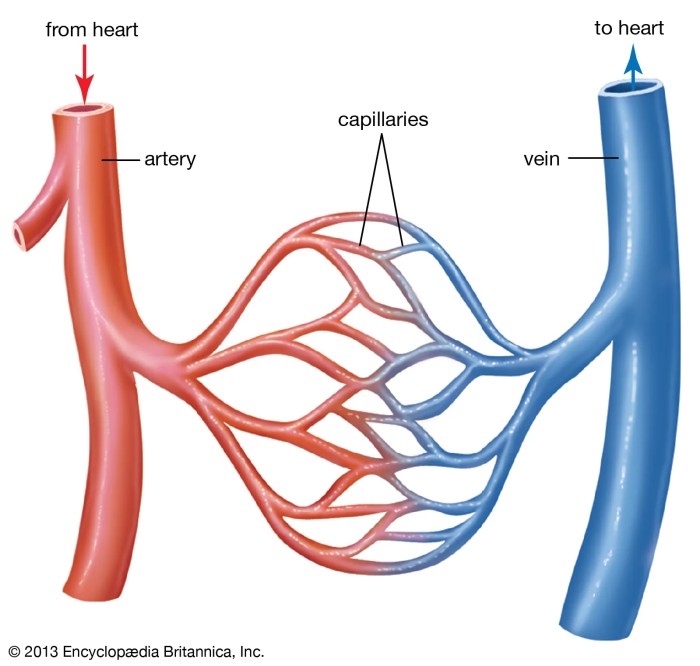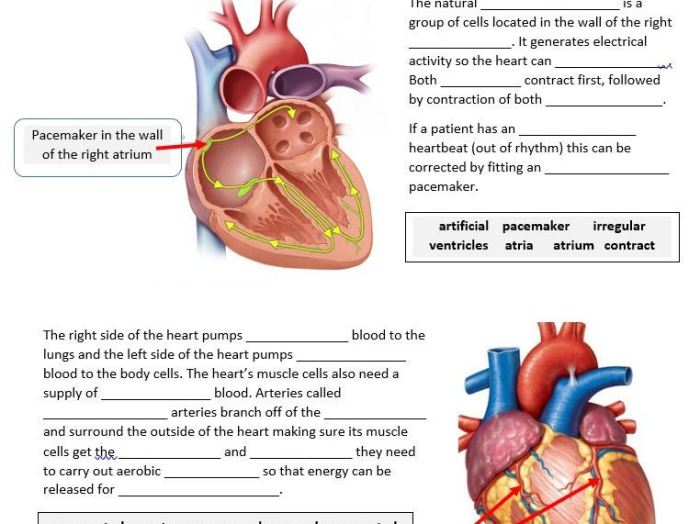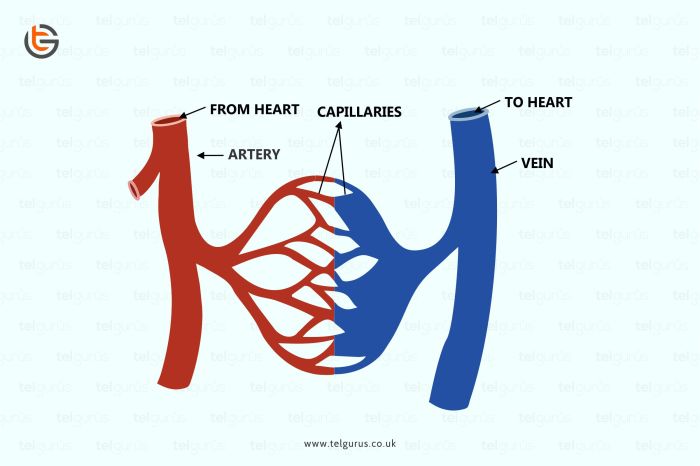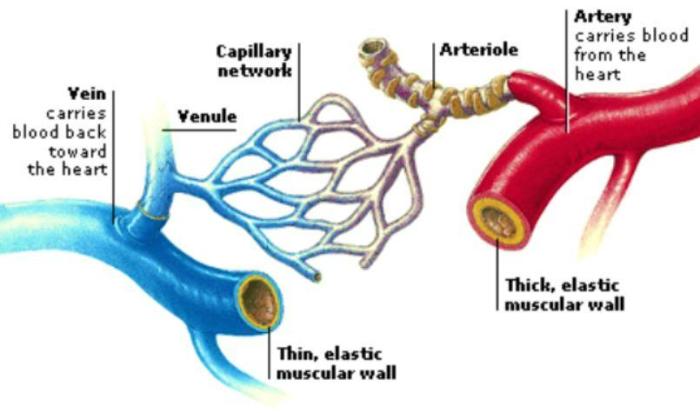Embark on a captivating journey with our Heart Veins and Arteries Quiz! Dive into the intricate world of the heart’s circulatory system and unravel the mysteries of its vital components.
From the coronary sinus to the great cardiac vein, from the left coronary artery to the posterior descending artery, this quiz will challenge your understanding and expand your knowledge.
Veins of the Heart

The veins of the heart collect deoxygenated blood from the heart muscle and return it to the right atrium. The major veins of the heart include the coronary sinus, the great cardiac vein, and the anterior cardiac veins.
Coronary Sinus and Its Tributaries
The coronary sinus is a large vein that drains the posterior surface of the heart. It is located in the atrioventricular sulcus and receives blood from the following tributaries:
- Great cardiac vein
- Middle cardiac vein
- Small cardiac vein
- Posterior ventricular vein
- Oblique vein of the left atrium
Great Cardiac Vein
The great cardiac vein is the largest tributary of the coronary sinus. It drains the anterior surface of the heart and follows the course of the anterior interventricular artery.
Venous Drainage of the Left Ventricle
The left ventricle is drained by the anterior cardiac veins, which empty into the coronary sinus. These veins are located on the anterior surface of the heart and follow the course of the anterior interventricular artery.
Arteries of the Heart

The heart, like any other organ in the body, requires a constant supply of oxygen and nutrients to function properly. This is provided by the coronary arteries, which are specialized blood vessels that supply the heart muscle with oxygenated blood.
Three Main Coronary Arteries
There are three main coronary arteries:
- Left coronary artery (LCA)
- Right coronary artery (RCA)
- Left circumflex artery (LCx)
Left Coronary Artery
The left coronary artery (LCA) is the largest of the three coronary arteries. It arises from the aorta just above the aortic valve and travels along the left side of the heart. The LCA gives off several branches, including:
- Left anterior descending artery (LAD)
- Left circumflex artery (LCx)
The LAD supplies the anterior (front) and apical (lower) portions of the heart, while the LCx supplies the lateral (side) and posterior (back) portions of the heart.
Posterior Descending Artery
The posterior descending artery (PDA) is a branch of the RCA that supplies the posterior (back) portion of the heart. The PDA is significant because it is often the only artery that supplies blood to the posterior portion of the heart.
If the PDA becomes blocked, it can lead to a heart attack.
Collateral Circulation of the Heart

Collateral circulation refers to the network of alternative blood vessels that supply blood to the heart muscle in case of a blockage in the main coronary arteries. This network plays a crucial role in maintaining adequate myocardial perfusion, especially during periods of increased demand.
Thebesian veins are small vessels that connect the coronary sinus to the chambers of the heart. They play a significant role in collateral circulation by providing an alternative pathway for blood to drain from the heart muscle.
Role of Collateral Circulation in Myocardial Perfusion, Heart veins and arteries quiz
- Provides alternative pathways:Collateral circulation establishes new routes for blood to reach the heart muscle, bypassing blocked coronary arteries.
- Reduces myocardial ischemia:By ensuring adequate blood supply, collateral circulation helps prevent myocardial ischemia, a condition in which the heart muscle is deprived of oxygen.
- Enhances myocardial function:Collateral circulation contributes to maintaining myocardial function by providing a reliable blood supply, which is essential for proper cardiac contraction and relaxation.
Coronary Artery Disease

Coronary artery disease (CAD) occurs when the arteries that supply blood to the heart become narrowed or blocked. This can lead to a heart attack, which occurs when the blood supply to a part of the heart is completely blocked.
CAD is the leading cause of death worldwide.There are several risk factors associated with CAD, including:* High blood pressure
If you’re looking for a reliable source to help you with your heart veins and arteries quiz, be sure to check out the gizmo weather maps answer key . This comprehensive guide provides detailed explanations and diagrams to help you understand the complex anatomy of the cardiovascular system.
Whether you’re a student preparing for an exam or simply curious about the inner workings of your body, this resource will prove invaluable in deepening your knowledge of heart veins and arteries.
- High cholesterol
- Diabetes
- Smoking
- Obesity
- Physical inactivity
- Family history of CAD
There are different types of CAD, including:* Stable angina: This is a type of chest pain that occurs when the heart is not getting enough blood. It is usually caused by a narrowing of the coronary arteries.
Unstable angina
This is a type of chest pain that is more severe and can occur even when the person is at rest. It is a sign that the coronary arteries are becoming more blocked.
Heart attack
This occurs when the blood supply to a part of the heart is completely blocked. It can cause chest pain, shortness of breath, and sweating.
Management of Coronary Artery Disease

Coronary artery disease (CAD) is a condition in which the arteries that supply blood to the heart become narrowed or blocked. This can lead to a heart attack, which occurs when blood flow to the heart is completely blocked.
There are a number of treatment options for CAD, including lifestyle modifications, medications, and surgical interventions.
Lifestyle Modifications
Lifestyle modifications can help to reduce the risk of developing CAD or slow its progression. These modifications include:
- Quitting smoking
- Eating a healthy diet
- Getting regular exercise
- Maintaining a healthy weight
- Managing stress
Medications
Medications can be used to treat CAD and prevent heart attacks. These medications include:
- Aspirin
- Statins
- Beta-blockers
- Calcium channel blockers
- Nitrates
Surgical Interventions
Surgical interventions may be necessary to treat CAD if lifestyle modifications and medications are not effective. These interventions include:
- Coronary artery bypass grafting (CABG)
- Percutaneous coronary intervention (PCI)
Cardiac Catheterization and Angioplasty
Cardiac catheterization is a procedure in which a thin tube is inserted into an artery in the groin and threaded up to the heart. This procedure can be used to diagnose CAD and to perform angioplasty.
Angioplasty is a procedure in which a balloon is inflated inside a narrowed artery to widen it. This can help to improve blood flow to the heart.
Cardiac Rehabilitation
Cardiac rehabilitation is a program of exercise, education, and counseling that can help people who have had a heart attack or other cardiac event to recover and improve their quality of life.
Commonly Asked Questions: Heart Veins And Arteries Quiz
What is the role of the coronary sinus?
The coronary sinus collects deoxygenated blood from the heart muscle and returns it to the right atrium.
What is the significance of the posterior descending artery?
The posterior descending artery supplies blood to the posterior wall of the left ventricle, which is responsible for pumping blood to the body.
How does collateral circulation contribute to myocardial perfusion?
Collateral circulation provides alternative pathways for blood flow to the heart muscle, ensuring that it receives adequate oxygen and nutrients even if one or more coronary arteries are blocked.